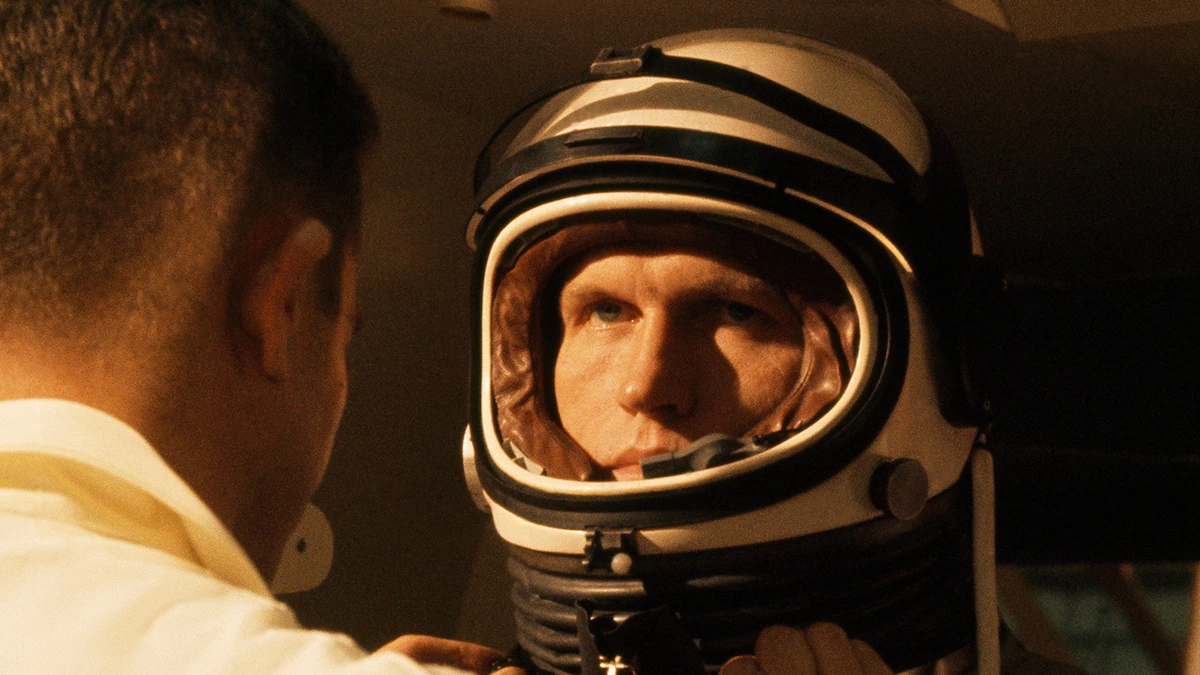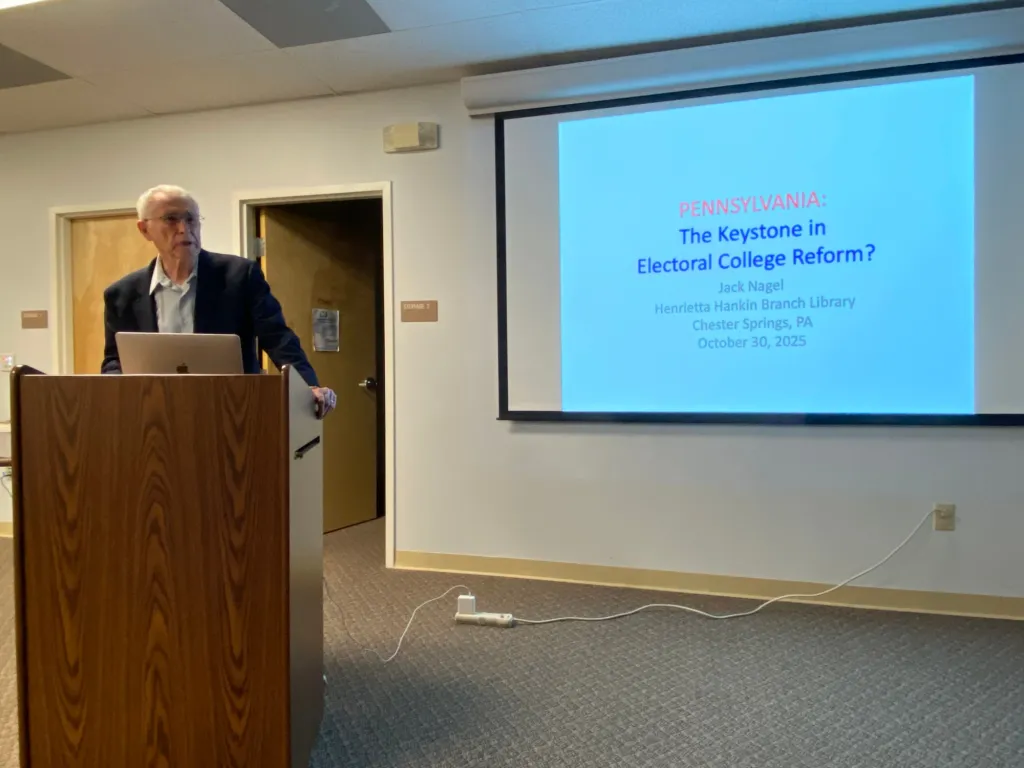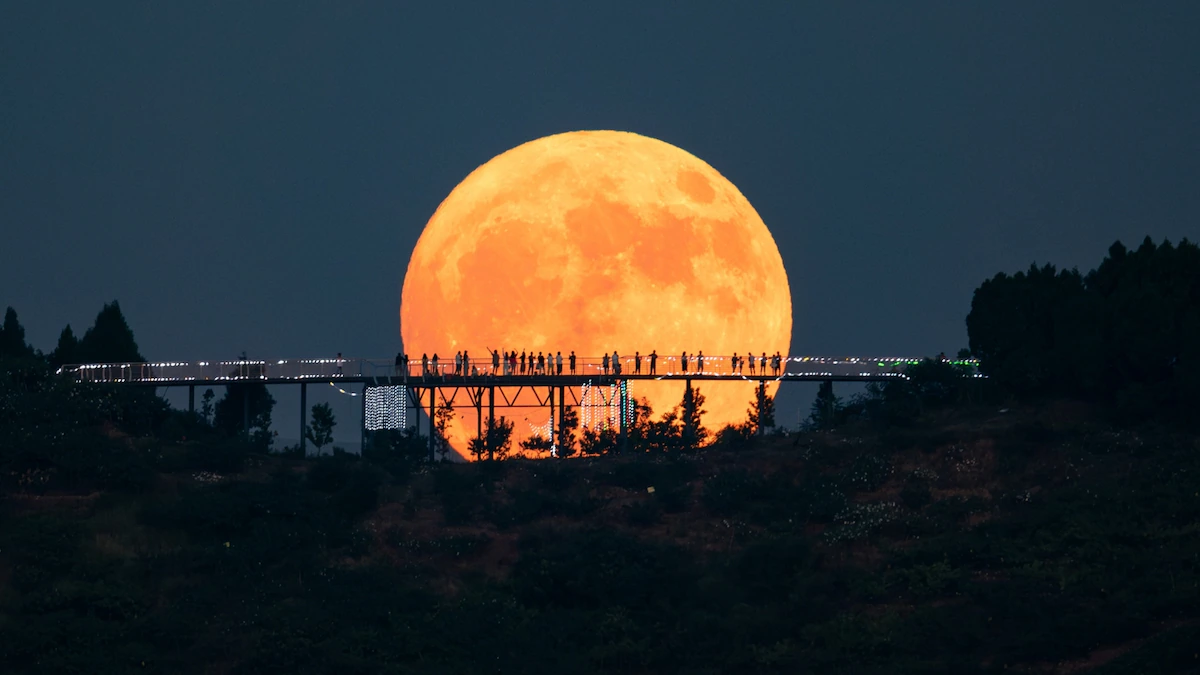Copyright National Geographic

This story originally published in the January 1965 issue of National Geographic magazine. See more digitized stories from our archives here. This is the year of the Gemini. Before 1965 is many months old, a powerful Titan II rocket will blast off from Cape Kennedy, carrying two American astronauts aboard a spacecraft called Gemini—after the twins of the zodiac. For more than two years these men and their fellow astronauts have prepared themselves for Project Gemini and the epochal lunar voyages that will follow. They have pursued a unique training curriculum, and their classrooms lie scattered throughout the country. They have attended hundreds of lectures, pored over thousands of documents, and sat through countless technical meetings. They have conditioned their bodies to withstand grueling combinations of stresses: acceleration, weightlessness, noise, heat, cold, vibration, disorientation, and immobilization. They have learned to survive in Panama's tropical jungles and in Nevada's scorching deserts. They have studied the geology of steaming fumaroles, lava tubes, and ice caves. They have sunk their pickaxes into basalt, shale, and pre-Cambrian rocks. They have visited factories to watch embryo spacecraft take shape. They have practiced with dozens of training devices, simulating possible accidents and how to avoid them. Such exacting preparations have made American astronauts the world's most active commuters. Flying sleek, white-bellied super-sonic trainers, they race the sun from coast to coast, squeezing extra hours out of the day and dragging white contrails in a crazy-quilt pattern across the heavens from Florida to California, Long Island to Oregon, St. Louis to the Nation's Capital. Exclusive Holiday Gift Bundle Gift a subscription to wonder Home is the National Aeronautics and Space Administration's Manned Spacecraft Center near Houston, Texas, 1,620 acres of laboratories, test chambers, and offices. Across its geometrical landscape, the great adventure of our time unfolds: a trip to the moon. To understand the magnitude of these events, look at the recent history of space. Less than two years ago, I stood in the Mercury Control Center as Maj. L. Gordon Cooper, Jr., hurtled into orbit in his 4,000-pound, one man capsule on this Nation's longest space flight: 34 1/3 hours. Now the 7,000-pound Gemini awaits her two-man crew and much longer orbital journeys. (How the space race launched an era of exploration beyond Earth.) Rendezvous in space comes first Gemini flights are an intermediate step in our moon-flight program. They will permit us to study the effects of weightlessness for up to two weeks and teach us the technology required to bring two vehicles together in space. We must master space rendezvous if we are to reach for the moon later. In our Gemini program, managed by Charles W. Mathews, astronauts will practice this complex maneuver with the unmanned Agena vehicle, separately launched on an Atlas missile. Before the end of this decade, the 34-story Apollo-Saturn V vehicle will carry men to the moon. Apollo consists of two spacecraft: the 57,000-pound Command and Service Modules in which three men will travel to and from the moon, and the 29,000-pound Lunar Excursion Module (LEM) in which two of the crew will land on the lunar surface while the third orbits the moon in the Command Module, awaiting their return. If the Mercury vehicle is the Wright Flyer of the Space Age, certainly the Apollo ranks as the jet transport of space flight. Moreover, space progress is accelerating. More than half a century passed between the Wright Flyer and commercial jets. Less than a decade will separate earth-girdling Mercury from the lunar touchdown of Apollo. And who knows what lies beyond? As Director of the NASA Manned Spacecraft Center, I have watched the growth of our Nation's space technology. I remember the makeshift quarters in which a few of us gathered in 1958 to begin Project Mercury. Today, from my ninth-story window in our Project Management Building, I look out on some of the world's finest specialized facilities for manned space flight, now rapidly approaching completion. For example, the nine-story building to my left contains a 120-foot-high chamber in which a full-size spacecraft and its crew will experience a simulation of the moon's hostile environment. Chamber walls filled with liquid nitrogen expose Apollo's skin to the -280° F. of the nighttime lunar surface. Through portholes on one side and above, racks of glaring searchlights bake the craft at 260° F., the daytime maximum. Our earliest lunar explorers probably will not have to endure such extremes of temperature when walking about the moon’s surface; they may land in an area not illuminated by direct sunlight but by earthshine, the reflected light of our own planet. But their space suits must be designed—and successfully tested—to withstand any eventuality. Without the bulky protective suit, a trip into the chamber would be like having one foot in the deep freeze and the other in the barbecue pit. We expect to take care of the heat and cold with insulation and a small backpack containing a life-support system. But the suit, when pressurized in a vacuum, becomes stiff and hinders movement. The astronauts will need practice working with it under realistic conditions. They can get much of their training right here at our Manned Spacecraft Center. With more 20 buildings—ultimately there will be some 60—the center resembles a modern university. Its office buildings surround a quadrangle dotted with live oaks, pines, and pools. Here we see a major segment of accumulated scientific knowledge at work, attacking the unbelievably difficult problems of sustaining man in space. Like a university, this campus has a faculty: 2,200 of this country’s most experienced aerospace engineers and scientists, supported by nearly 2,200 technicians, administrators, and clerical workers. Besides managing development of spacecraft, our people pursue advanced research projects; they also spend much time in the classroom, both teaching and being taught. (What was Operation Paperclip? How the recruitment program shaped our space program.) But our best-known students are the astronauts. Their training is the most intensive and expensive. They spend 50 hours a week for two to five years training for a single flight. On lunar missions, each crew will be responsible for a vehicle costing more than the entire training program for all the astronauts. We provide only postgraduate training for the astronauts. Their preparation really began years ago in college, where most of them obtained engineering or science degrees. Then came flight training and as many as ten years as jet pilots. Many have had a graduate course in test-pilot school. Experienced pilots, they have excellent health, emotional stability, and coolness under pressure. They have operated aircraft under the most dangerous conditions; nine have flown in combat. They have faced fear and learned to overcome it. Our astronaut team now totals 28 members, including six of our original seven-man Mercury team, nine "intermediate" class members brought aboard for the two-man Gemini flights, and 13 of an original 14 "fresh men" just completing their first full year of space training. Later this year we will select a dozen or so additional astronauts with emphasis on their science background. Studies include comets and computers Our Astronaut Training Program covers four major areas: The Spacecraft: Each man must become thoroughly familiar with all the space vehicles, how they are built, and how they fly. The Space Environment: Each must learn to feel at home in the weightlessness of space; the weak lunar gravity, only one-sixth that of earth; forbidding temperature extremes, and the crushing forces of launch and re-entry. Space Survival: Each must learn how to eject himself from his spacecraft should some thing go wrong during launch or re-entry, and to survive wherever he lands, in the water, desert, or jungle, until rescued. Space Science: Each must become a skilled observer, with a knowledge of geology and astronomy, in order to bring back scientific information—a primary NASA goal. In 200 hours of lectures, an astronaut learns about hypergolic fuels and hyperbolic velocities, about telemetry and temperature control, about everything from comets and cryogenics to computers and communications. But astronauts need more than books and lectures. Spacecraft change as new systems are added, old systems modified. Astronauts face the problem that troubled an old Swedish friend, who said: "I have hardly learned to say yob, and already they are calling it proyect." The complexity of the program is such that one of the best ways to keep up to date is to work right with the engineers who design the spacecraft. This is one of the advantages of having the astronauts train at our center side by side with the skilled scientists who manage our spacecraft programs. By sitting in on engineering design meetings, the astronauts hear of modifications as soon as they are initiated. One man cannot hope to attend all engineering sessions; each of the astronauts takes on a specialty and keeps the other 27 abreast of developments. As spacecraft systems become more complex, we must use more elaborate training aids. Gemini, for example, uses "systems trainers"—billboard-size diagrams with special lighting effects to show the astronaut what lies behind the blinking signals and trembling needles of his instrument panel. When he throws switches on a mock panel, relays chatter, indicators flash, and routes light up in various patterns of color to show the flow of oxygen, water, and power through the systems. These devices unwind the intricate wiring of all the black boxes and lay it out in a map that the eye can follow and the mind understand. So the astronauts acquire a basic understanding of their spacecraft. But that is quite different from actually operating the controls in split seconds and reacting instantly and accurately to emergencies. An airplane pilot can practice in the air with an instructor to take over in case of trouble. But in a spacecraft the astronaut is on his own from the first moment of flight. How to practice, then? With mechanical flight simulators. The idea of simulation is not new. The Romans, faced with Carthaginian sea forces, had to learn techniques of naval warfare. They set up several galley frames on shore, and in these "fixed-base simulators" they trained crews to row and legionaries to board for hand-to-hand combat. In contrast, space-flight simulation has become so complex that we can take it only in steps. At first the astronaut practices bits and pieces of the total mission in "part-task trainers." We have converted the old Mercury procedures trainer into a part-task trainer for Gemini. In it the astronaut can practice one of the most difficult parts of the Gemini mission, seeking out and hooking up with the Agena spacecraft. Out the window of this part-task trainer, the astronaut sees a dark void dusted with stars. As he maneuvers his simulated spacecraft, a blinking light glows brighter and brighter until it finally approaches close enough to reveal the cylindrical shape of the Agena vehicle. To practice the complete two-man Gemini orbital mission requires a far more complex trainer than that used in Mercury. For this purpose we have had to build a new Gemini Full-Mission Simulator. Whenever I inspect this trainer I am always impressed by the roomful of computer equipment necessary to reproduce intricate Gemini maneuvers. Compared to the spinet-size Mercury trainer control console, Gemini's looks like a pipe organ. (Why one author wrote a stylish account of America's race for space.) Earth floats outside trainer window Inside, the spacecraft reminds me of a sports car, with a control panel between the seats. Instead of ashtrays and glove compartments, this center console is studded with switches and knobs. From it projects the gearshiftlike control stick. Since both astronauts must be able to fly, the man sitting in the right-hand seat will have to use his left hand. Squeezing down into the seat and pulling the hatch closed over your head, you find yourself crowded into a space slightly smaller than a phone booth. For an astronaut, this will be "home" for up to two weeks. Its window is attached to a complex optical and color TV system which reproduces the view of the earth. From a hundred miles up, you see pin-point stars in a black sky, and sunlit blue-green earth stretching almost 900 miles to the curving horizon. Gemini is a highly maneuverable vehicle. Whereas Mercury, like a cannon ball, was limited to one trajectory or orbit, Gemini can change orbits and maneuver during re-entry to select the best landing point. The instrument panel reflects this complexity. Like a modern jet, it bristles with instruments showing the vehicle's attitude, position, engine status, and fuel supplies. Needles move and lights flicker on and off realistically as the instructor puts the trainer through its paces. "4, 3, 2, 1, 0, lift-off." With a simulated roar of Titan II rocket engines, your imaginary flight begins. The spacecraft clock is running, and now the altimeter needle comes off the peg as the Titan rumbles its way skyward. Then, seconds after lift-off, the black-and white eight-ball attitude instrument rolls slightly to the left and then downward as the rocket arcs over and heads down range from Cape Kennedy. "Two minutes, thirty seconds. Stand by for BECO." A yellow light flashes on, indicating booster engine cutoff. In a moment, a green light and a roar confirm that the Titan's second-stage engine has come to life. "Five minutes, thirty seconds, guidance looks green. Stand by for SECO." The read-out display of Gemini's timer slowly counts the seconds to the point of sustainer-engine cutoff. Now the engine roar gives way to silence, and you are in orbit, circling the earth at a speed of some 17,500 miles an hour. I remember that Maj. Virgil I. Grissom was once asked what part of the Gemini flight would be the most difficult. "I guess the part between lift-off and landing," Gus replied. LEM pilot must land carefully Though the Gemini trainer seems complex, the Apollo simulator will surpass it. Stanley Faber, chief of flight simulation, likes to tell visitors, "It will have everything, including—literally—a bathroom and a kitchen sink." More than twice as large as the Gemini trainer, the Apollo equipment will actually consist of two units: the simulators of the Command Module and the LEM. Among the many impressive features, an out-the-window display gives the crew a panoramic, make-believe journey through half a million miles of space. Nine tons of optical equipment produce this celestial extravaganza so accurately that astronauts can practice their critical star navigation and moon landings. Though the Apollo simulators are not yet operational, we can get a good feel for what the moon landing in the LEM will be like in our Guidance and Control Division. Stepping through a doorway, one enters a cabin some what like the bridge of a ship. Instead of a ship's wheel, we find switches that can begin a make-believe landing. Through a triangular window on the left glares a nightmare surface—red and yellow crosses and arrows grouped in squares like a patchwork quilt. This particular device can not simulate the valleys and plains of the moon, as the actual LEM simulator will do, so it creates a completely abstract surface in full color. (Into the ‘new ocean’: captivating images from America's first space program.) Docking trainer rides cushion of air Test pilot James Brickle describes the landing problem: "The autopilot starts you curving toward the lunar surface. You take over at 200 feet, as the LEM rushes downward. Your job is to slow it with your descent engine enough for a soft landing in a safe place—and you have only two minutes to do it. After that your landing fuel burns out. Without power, and with no air or parachute to slow you down, you would smash into the lunar surface." But these stationary simulators have one thing in common: If you make a mistake, you do not smash into anything. You merely press the button marked "Reset" and start over. For critical piloting tasks, we use simulators that move like the spacecraft themselves. One of these "moving-base" trainers, the Translation and Docking Simulator, is here at the center. It occupies a gymnasium-size building painted black inside to suggest the darkness of space. Now, with Comdr. Walter M. Schirra, Jr., at the controls, Gemini nods, turns, and rolls. From within the cabin, Wally peers out at the bulky Agena, suspended at the far end of the darkened chamber and half lit by a shower of artificial sunlight. "Starting docking maneuver," Wally calls as he nudges the propulsion handle. A low hiss issues from the simulated thrusters. But rather than the Gemini moving, as it would in actual flight, the Agena moves. With gathering momentum, Agena rushes silently toward the Gemini cabin on cushioned slippers of air. "Oops, a little too much," Wally says, and pulls back on the control handle. Gingerly he maneuvers the target, a silver tube with flickering rendezvous light. There is a slight bump as the vehicles come together. "It always reminds me of inflight refueling," Wally remarks as he nudges the blunt nose of Gemini into the basketlike adapter ring on the Agena. "Daddy longlegs" teaches lunar landings After mastering the moving-base trainers, the astronaut takes the final examination: simulators that actually fly. In NASA's Flight Research Center at Edwards Air Force Base, California, the astronauts practice landings in the LLRV-Lunar Landing Research Vehicle. This jet-powered "daddy longlegs" performs here on earth as the LEM will on the moon. A powerful jet engine, almost hidden in the center of its aluminum skeleton, points constantly downward. With its push, the bizarre craft takes off vertically and ascends to more than 1,000 feet. There the astronaut throws a switch that throttles the engine back to compensate for precisely five-sixths the weight of the vehicle. The remaining weight makes the vehicle fall at just the speed with which it would approach the lunar surface under influence of the moon's weaker gravity. From this point down, the pilot brakes and maneuvers his craft with small rocket motors like those planned for the LEM. A practice landing on the desert is as close as you can come to the real thing. A mistake could mean ending up in a pile of scrap metal on the desert floor. With the many simulators in NASA's inventory, the astronauts agree that there is still no substitute for 20 to 30 hours of actual jet flying each month. Lt. Comdr. Charles Conrad, Jr., sums it up well: "It's easy to sit back in a training device and know that if you do something wrong the instructor will push the reset button and you can try again. But in an airplane you're on your own." But the astronaut must know more than how to fly a spacecraft. He must also learn to handle his own body in drastically changed environments. The BETA trainer (for Balanced Extra-vehicular Training Aircraft) accustoms him to moving about in frictionless space. This metal saucer floats above a steel floor, as if by magic, on cushions of compressed air. A doughnut-shape tank between saucer and floor emits the sustaining air through tiny jets. The astronaut must balance, surfboard style, on the saucer, and with short bursts of air from a multibarreled pistol, he skims across the floor like an Arabian prince on a flying carpet. A forward-firing burst from the pistol sends the saucer scooting backward; fire to the rear, and the saucer reverses direction. It's the world's lowest-flying aircraft-at one-thousandth of an inch altitude. "The trick is to shoot from the hip, from the body's center of gravity," BETA inventor Harold I. Johnson points out. "If you hold the gun at eye level, you spin head over heels." The astronauts experience total or partial weightlessness for just under half a minute in the padded cabin of a modified KC-135 jet tanker as it reaches the peak of a roller-coaster trajectory. For Apollo crew training we can also fly the KC-135 in a slightly more shallow parabolic trajectory and produce one-sixth the force of earth gravity. This helps in testing the tools and instruments designed for use on the moon's surface. Walking on wall not just for flies Another device enables the astronaut to move about on earth as he would in the lower gravity of the lunar surface. In this simulator at NASA's Langley Research Center in Virginia, the astronaut hangs in a harness like a puppet and walks flylike on an inclined wall. The angle of the wall is designed so that just one sixth of his weight rests against it. Eventually the space voyager must return—and so must his weight. As he hurtles into our resistant atmosphere, he briefly experiences the unpleasant sensation of weighing more than half a ton. Gemini pilots have conditioned themselves to endure this phenomenon at the U. S. Naval Medical Acceleration Laboratory in Johnsville, Pennsylvania, where they ride a one-man gondola around a circular course at high rates of acceleration. A larger centrifuge is under construction at the Manned Spacecraft Center. The electric motor, which will propel a three-man gondola simulating the Apollo spacecraft, will be one of the world's largest direct-current motors. The rotor alone will weigh almost 100 tons twice as much as Apollo's payload! "Much of our training comes under the heading 'preparing for the unexpected,'" Astronaut Neil A. Armstrong says. "We don't expect to abort, or use our parachutes. Nor do we think we'll ever bring a spacecraft down in the Amazon jungles or the Gobi Desert. Still, we take every step to be ready." Crew members practice their parachute landings in Galveston Bay. A boat tows the astronaut into the air, a procedure cheaper and easier than using a plane. Starting a few feet back from the water's edge, he allows the breeze to fill the canopy before signaling the helmsman to pour on power. The astronaut launches himself with a few running steps, and his chute lifts him as high as 400 feet. Once aloft he releases the towline and floats down to a wet but safe landing. Getting wet is nothing new in astronaut training, however. "Until we add some sort of gliding capability and landing gear to our spacecraft, ocean recovery is likely to remain the best way of coming down from orbit," says Lt. Comdr. Alan L. Bean, astronaut specialist in recovery systems. "Those thousands of square miles of uncluttered water surface offer a very handy shock absorber." At the Naval Air Station in Pensacola, Florida, each crew member learns to swim while encumbered by a bulky pressure suit. The Navy swimming pool is also a good place to learn how to untangle himself from parachute shroud lines, how to use his one-man life raft, and how to get into a helicopter rescue sling. Actual practice in getting out of the Gemini spacecraft begins in the water test basin at Ellington Air Force Base, here at Houston. Using what we call a "boilerplate" Gemini, intended only for tests or training, a two-man team learns to coordinate body movements with the spacecraft to keep from tipping it over. Similar sessions follow in the open water of nearby Galveston Bay. Survival "classrooms": desert and jungle To learn what to do in the punishing sun of the desert, the astronauts travel to Stead Air Force Base in the dry sagebrush country of western Nevada. Before they are turned loose for two days in the wilderness, the astronauts must learn to make emergency clothes of parachute material: sheik-style headdress and flowing robes of orange and white nylon. Despite dire tales of sidewinders and Gila monsters, we've had only one small incident to mar the training. John Young was stung on the ankle by a scorpion, but he took care of his own wound, refusing offers of medical help from the base. "After all," he reasoned, "I wouldn't find any medics wandering around in the Sahara." We've also turned space trainees loose in the tropical rain forests of Panama. At the Air Force Southern Command Tropic Survival School at Albrook Air Force Base in the Canal Zone, the jungle training includes instruction on edible wild fruits and insects even how to skin and prepare snake meat. Despite initial grimaces, the astronauts found most of the dishes fairly palatable. "It just depends on your appetite," said Capt. William A. Anders, as he turned down an iguana tidbit. "I've already eaten once this week." Survival exercises have shown the astronauts to be competent outdoorsmen. Still, it's all pretty uncomfortable, as Alan Bean indicated when I asked what the training had taught him: "I learned that the best thing to do is to try very hard to keep from coming down in the jungle." We hope our trips to the moon will help determine the origin of the moon and the earth. Therefore our space science training stresses geology. We begin at the level of a college freshman course. But the dosage is highly concentrated. We soon move on to the most recent ideas about lunar geology. Our geology classroom at Ellington looks like a small museum of mineral science. The displays combine large globes of the moon and models of lunar terrain. There are sample collections of rocks, meteorites, minerals, and crystals. Moon vista may look familiar In addition, two acres of craters are being constructed in the Texas soil by trucking in volcanic rock and cinders-materials that geologists consider similar to what we will find on the moon. A full-size mock-up of the Lunar Excursion Module will squat in this moon field, so astronauts can test methods for getting in and out. Here, too, they will try out their moonboots, gloves, and scientific gear. "We will keep improving this piece of the moon as new information comes in from our Ranger and Surveyor programs," said Dr. Ted H. Foss of NASA's special geology team. Already, from Ranger VII's photographs we have reason to believe that our moonfield does not have to be a deep dustbin. We hope to perfect our simulation to the point that the first astronaut on the moon will say, "Hey, this reminds me of Houston...." Lunar hazard: space suit blowout Field trips give the astronauts a firsthand acquaintance with land forms, rock strata, and the folding, bending forces recorded in layers of stone. "Grand Canyon makes a magnificent classroom," says geology instructor Uel Clanton. "Several hundred million years of the earth's history sliced into a mile-deep cross section—like a laboratory model blown up to full scale." In addition to Grand Canyon, astronauts have traveled to the Big Bend country of the Rio Grande and to Arizona's Sunset Crater, where they scram bled over contorted black lava flows. "If the moon is really volcanic," instructor Al Chidester told them, "you may find yourself trying to walk across this kind of lava field in a pressure suit." Maj. Frank Borman eyed the glass-sharp edges of the rock heaps. "An embarrassing place to have a flat," he noted. "With a slow leak in your suit you might make it back to the LEM—but with a blowout, you're dead!" (Apollo 8's commander reflects on the sights and sounds of the space age.) At Kitt Peak National Observatory, Arizona, the astronauts took a look at lunar craters through the world's largest solar telescope. Geologist Dr. Harold Masursky pointed out that few major telescopes are used for moon observation. "The size of the instrument is not too important for moon viewing," he said. "Our atmosphere is the worst problem." "What would be the best optical system for studying the moon?" Bill Anders asked.



